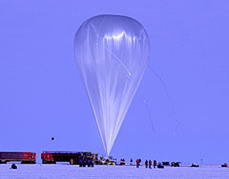3.

Mapping Antarctica
Antarctica was on the map long before anyone ever laid eyes on it.Nearly 2,400years ago,ancient Greek philosophers such as Aristotle believed that a great continent must exist at the bottom of the world.They thought it was needed to balance out the continents at the top of the world.In the 1500s,mapmakers often included a fanciful continent they referred to as Terra Incognita (Latin for"unknown land") at the bottom of their maps.But it was not until the 1800s----after explorers had sighted and set foot on Antarctica----that mapmakers got down to the business of really mapping the continent,which is one-and-a-half times the size of the U.S..
While the coastline could be mapped by ships sailing around the continent,it took airplanes----and later,satellites----to chart Antarctica's vast interior (内陆).That job continues today.And it is a job that can still require a mapmaker,or cartographer,to put on boots and head out into the wild.
Cole Kelleher is familiar with that.He is a cartographer with the Polar Geospatial Center (PGC),which is based at the University of Minnesota and has a staff at McMurdo Station.PGC teamed up with Google to use the company's Trekker technology to capture images of Antarctica for the Internet giant's popular feature,Street View.A Trekker camera,which is the size of a basketball,is set about two feet above a backpack.The camera records images in all directions."It weighs about 50pounds.I was out for two and a half days,hiking 10to 12hours each day,"says Kelleher.It was hard work,but really an incredible experience."According to Kelleher there are plans to use the technology to create educational apps for museums.

The PGC staff at McMurdo Station provides highly specialized mapmaking services for the U.S.Antarctic Program.For one project,Kelleher used satellite images to map huge cracks in the ice.That helped a team of researchers know whether they could safely approach their field camp on snowmobiles.Another recent project was to help recover a giant,high-tech helium (氦气) balloon used to carry scientific instruments high into the atmosphere.These balloons are launched in Antarctica because there is no danger that they will hurt anyone when they fall back down to Earth.Using satellite images,Kelleher and colleagues created maps of where the balloon could be found.
Antarctica may no longer be Terra Incognita,but it still holds countless mysteries.Cartographers and the maps they make will continue to be essential in helping scientists unlock those secrets.
74.From the passage,we can infer that Antarctic was on the map in the 1500s whenC.
A.mapmakers knew it was much larger than the U.S.
B.Aristotle named the continent Terra Incognita
C.no one had ever seen or been to the continent
D.it was such an interesting continent as was often referred to
75.Which of the following statements is NOT true according to the passage?B
A.It needs much work for the mapmakers to head out into the wild.
B.The interior can only be mapped by planes and satellites.
C.It is relatively easy to map Antarctica's coastline by ships.
D.Antarctic is a vast but still mysterious continent.
76.The Polar Geospatial Center (PGC) works with Google initiallyA.
A.to capture images of Antarctica for Street View
B.to test the company's Trekker technology
C.to create educational apps for museums
D.to hike for an incredible experience
77.The fourth paragraph mainly talks aboutD.
A.satellite images which are used to map huge cracks in the ice
B.a high-tech helium balloon for carrying scientific instruments
C.how to safely approach the researchers'field camp and the balloon
D.the specialized mapmaking services provided by the PGC staff.



 阅读快车系列答案
阅读快车系列答案 Mapping Antarctica
Mapping Antarctica